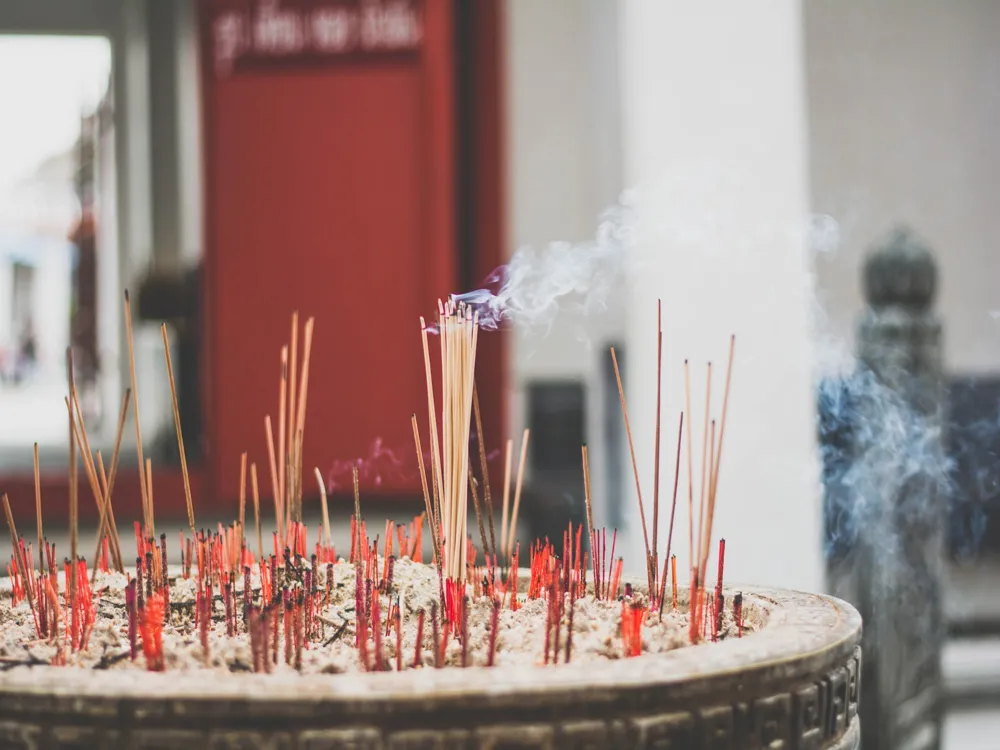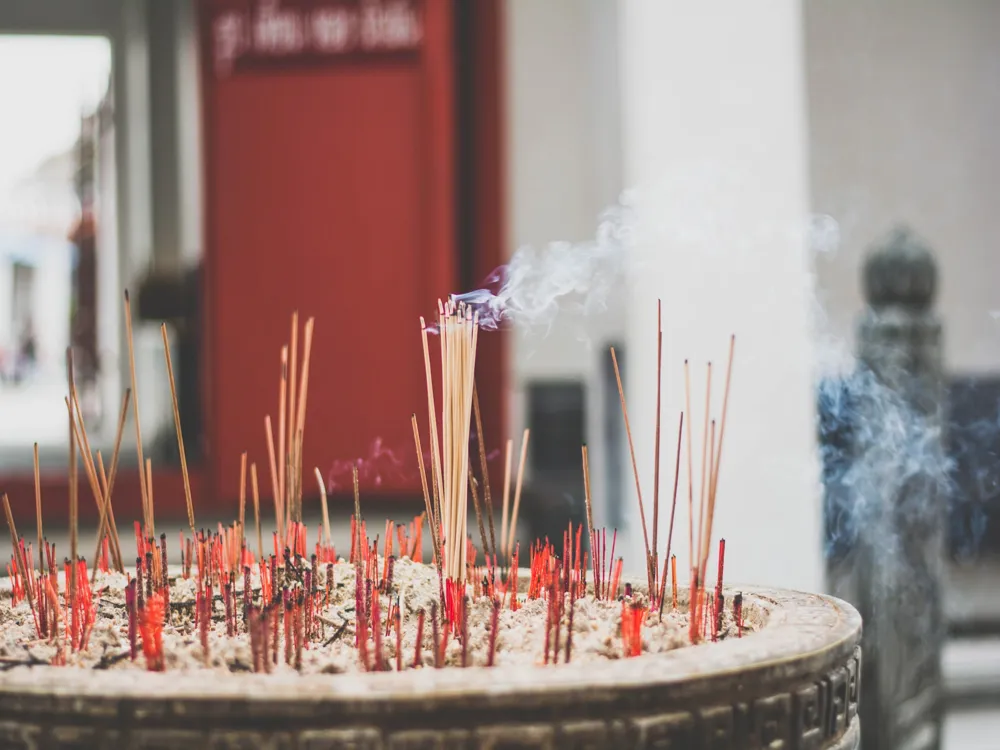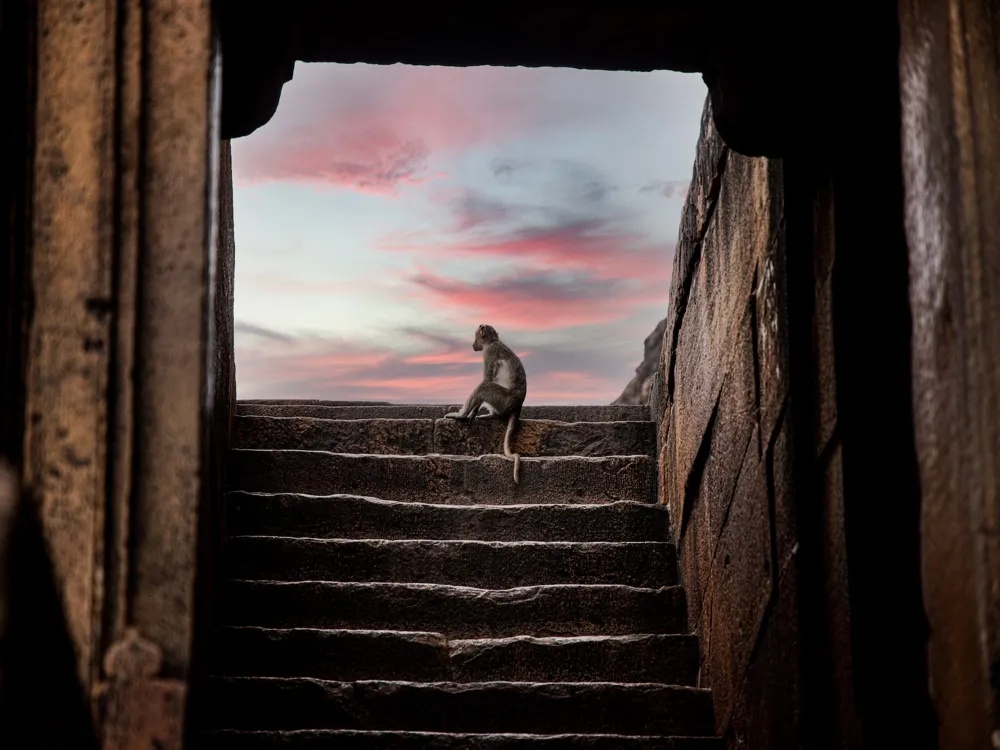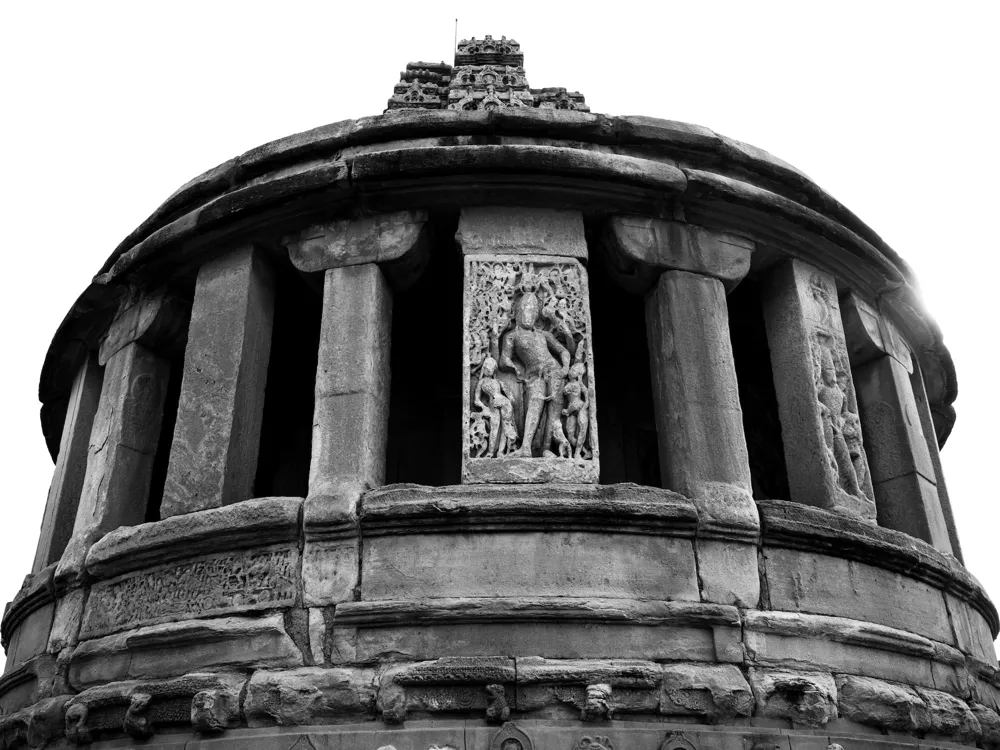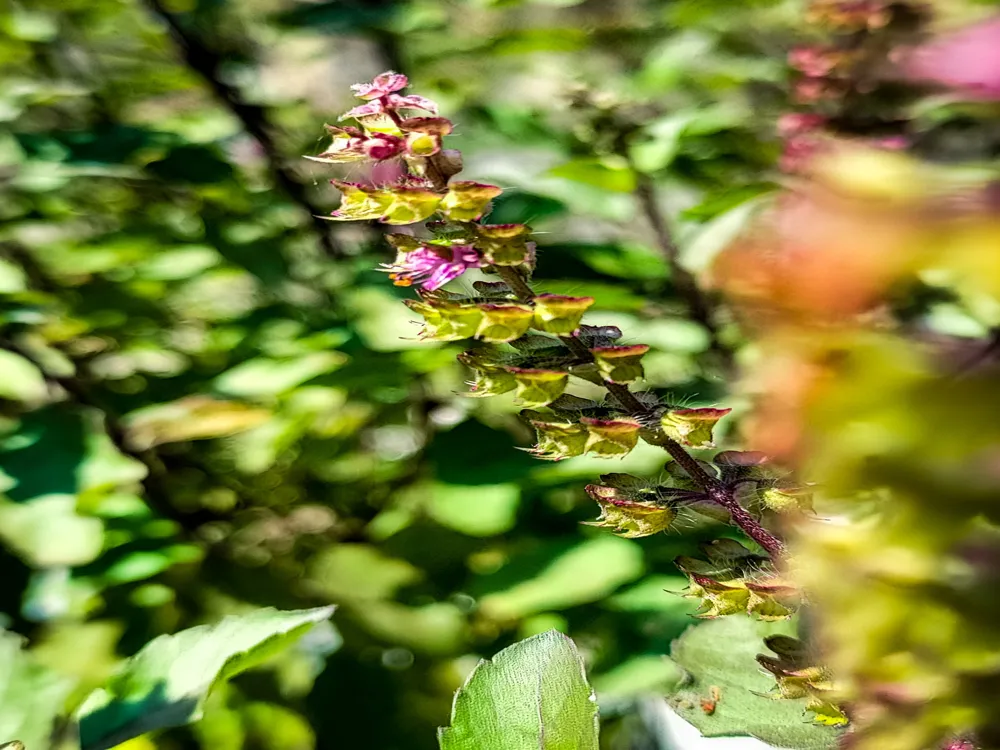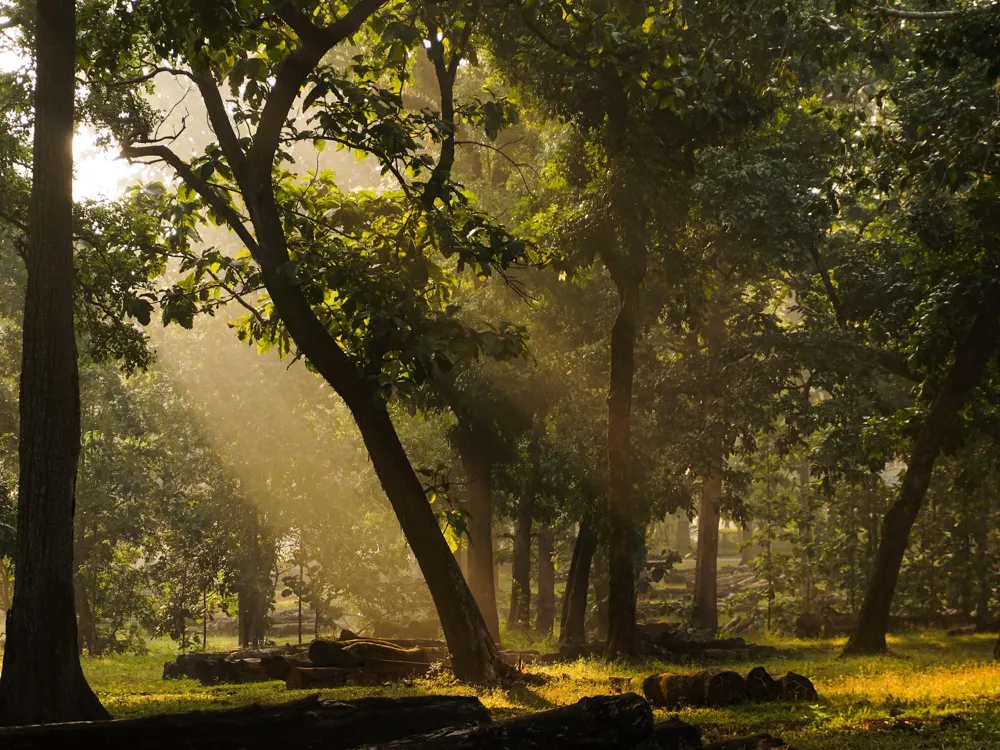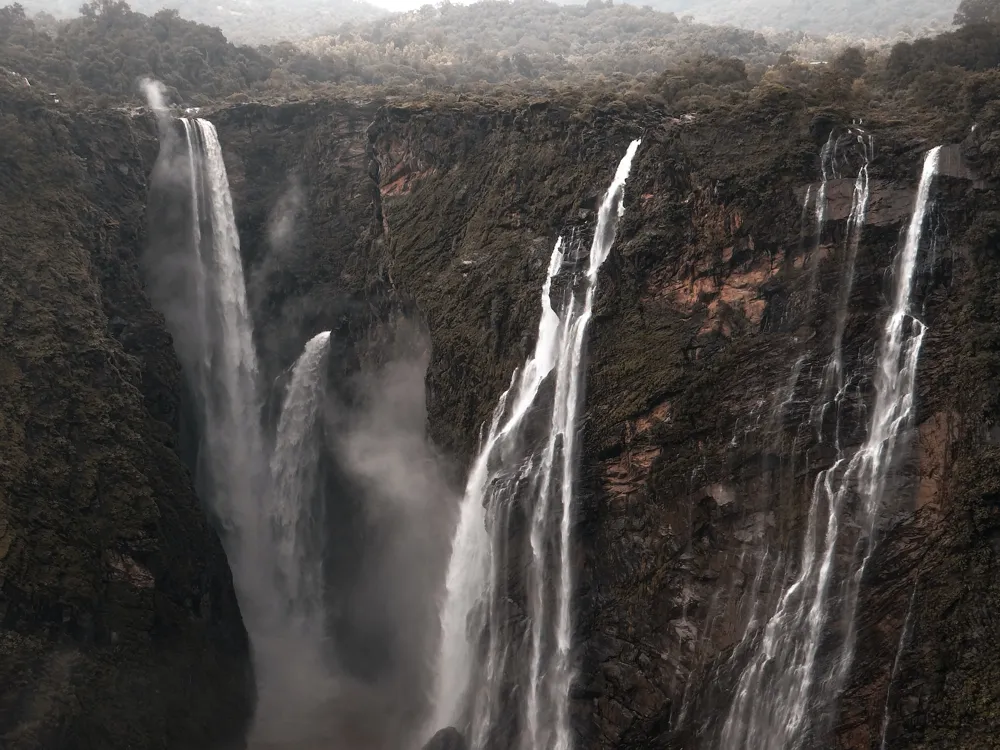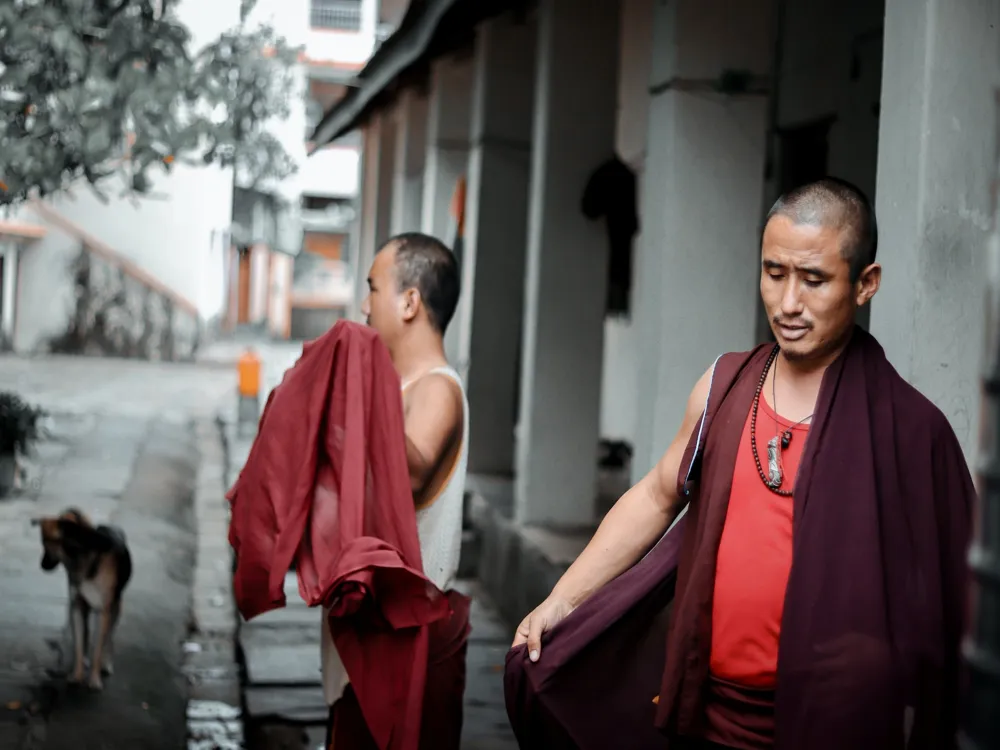The Mallikarjuna Temple, located in the historic village of Pattadakal in Karnataka, India, is a remarkable example of early medieval temple architecture in South India. This UNESCO World Heritage Site, dating back to the 8th century, is part of a complex of ten Hindu temples. The temple, dedicated to Lord Shiva, showcases a unique blend of architectural styles that were prevalent in northern and southern India during the Chalukya dynasty. Historically, Pattadakal served as a ceremonial center for the Chalukya kings, and the Mallikarjuna Temple stands as a testament to their architectural ingenuity. The temple complex is renowned for its intricate carvings, detailed reliefs, and impressive stone work. Visitors are often captivated by the temple's majestic presence, which is further enhanced by the serene environment of Pattadakal. The Mallikarjuna Temple's architecture is a harmonious blend of the Nagara style of Northern India and the Dravidian style of Southern India. This synthesis is a significant feature in Indian temple architecture, marking the Mallikarjuna Temple as an important cultural and historical landmark. The temple's structure includes a sanctum, a mandapa (hall), and a Nandi pavilion, each adorned with elaborate sculptures and carvings depicting various Hindu deities, mythological scenes, and spiritual motifs. The significance of the Mallikarjuna Temple extends beyond its architectural grandeur. It represents a critical period in Indian history where art, culture, and religion were interwoven to create monumental structures that have stood the test of time. The temple not only serves as a place of worship but also as a beacon of India's rich heritage and architectural prowess. The architecture of the Mallikarjuna Temple is a remarkable fusion of the Nagara and Dravidian styles, symbolizing a period of cultural and artistic unity in India. The temple's design reflects the architectural evolution that occurred during the 7th and 8th centuries under the patronage of the Chalukya dynasty. The temple's foundation is based on a square plan, a characteristic feature of the Dravidian style. The superstructure, however, is shaped like a curvilinear tower, which is a distinctive element of the Nagara style. This combination creates a visually stunning and balanced aesthetic. The tower, or shikhara, is intricately carved and culminates in a finial, which is believed to symbolize a connection between the earth and the divine. The exterior walls of the temple are adorned with an array of sculptures and bas-reliefs. These depict scenes from Hindu epics such as the Ramayana and Mahabharata, along with various deities and mythological creatures. The craftsmanship evident in these carvings highlights the skill and artistic vision of the Chalukyan sculptors. Inside the temple, the mandapa or hall leads to the inner sanctum, where the deity is housed. The hall is supported by intricately carved pillars, each telling a different story from Hindu mythology. The ceilings are equally impressive, featuring detailed carvings of lotus flowers and other geometric patterns. The Mallikarjuna Temple is not just a monument but a living testimony to the ingenuity of ancient Indian architects and artisans. It stands as a source of inspiration and a symbol of India's enduring cultural legacy. Visitors are advised to dress conservatively as the temple is a place of worship. Avoid wearing shorts or sleeveless tops. Wearing traditional Indian attire is appreciated but not mandatory. While photography is generally permitted, there may be restrictions in certain areas within the temple complex. Always look for signage indicating photography prohibitions or ask a temple official for guidance. Respect the local customs and rituals while visiting the temple. It's customary to remove your shoes before entering the temple premises. Also, maintain silence inside the temple to not disturb the worshippers. Consider taking a guided tour to gain deeper insights into the temple's history, architecture, and the symbolism behind the sculptures. Local guides are usually available at the entrance. The best time to visit the temple is during the cooler months from October to March. Early morning or late afternoon visits are preferable to avoid the midday heat. Pattadakal is well-connected by road and is accessible from various cities in Karnataka. The nearest airport is in Belgaum, about 150 kilometers away, while the closest railway station is in Badami, which is around 22 kilometers from Pattadakal. Regular buses and taxis ply from these points to Pattadakal. For a more local experience, one can also opt for auto-rickshaws available from Badami. Read More:Overview of Mallikarjuna Temple, Pattadakal
Architecture of Mallikarjuna Temple, Pattadakal
Tips When Visiting Mallikarjuna Temple, Pattadakal
Dress Appropriately
Photography Restrictions
Temple Etiquette
Guided Tours
Best Time to Visit
How To Reach Mallikarjuna Temple, Pattadakal
Mallikarjuna Temple, Pattadakal
Pattadakal
Karnataka
NaN onwards
View pattadakal Packages
Weather :
Tags : Temple
Timings : 06:00 AM - 06:00 PM
Entry Fee : INR 10
Camera: INR 25
Planning a Trip? Ask Your Question
Pattadakal Travel Packages
View All Packages For Pattadakal
Top Hotel Collections for Pattadakal

Private Pool

Luxury Hotels

5-Star Hotels

Pet Friendly
Top Hotels Near Pattadakal
Other Top Ranking Places In Pattadakal
View All Places To Visit In pattadakal
View pattadakal Packages
Weather :
Tags : Temple
Timings : 06:00 AM - 06:00 PM
Entry Fee : INR 10
Camera: INR 25
Planning a Trip? Ask Your Question
Pattadakal Travel Packages
View All Packages For Pattadakal
Top Hotel Collections for Pattadakal

Private Pool

Luxury Hotels

5-Star Hotels

Pet Friendly




